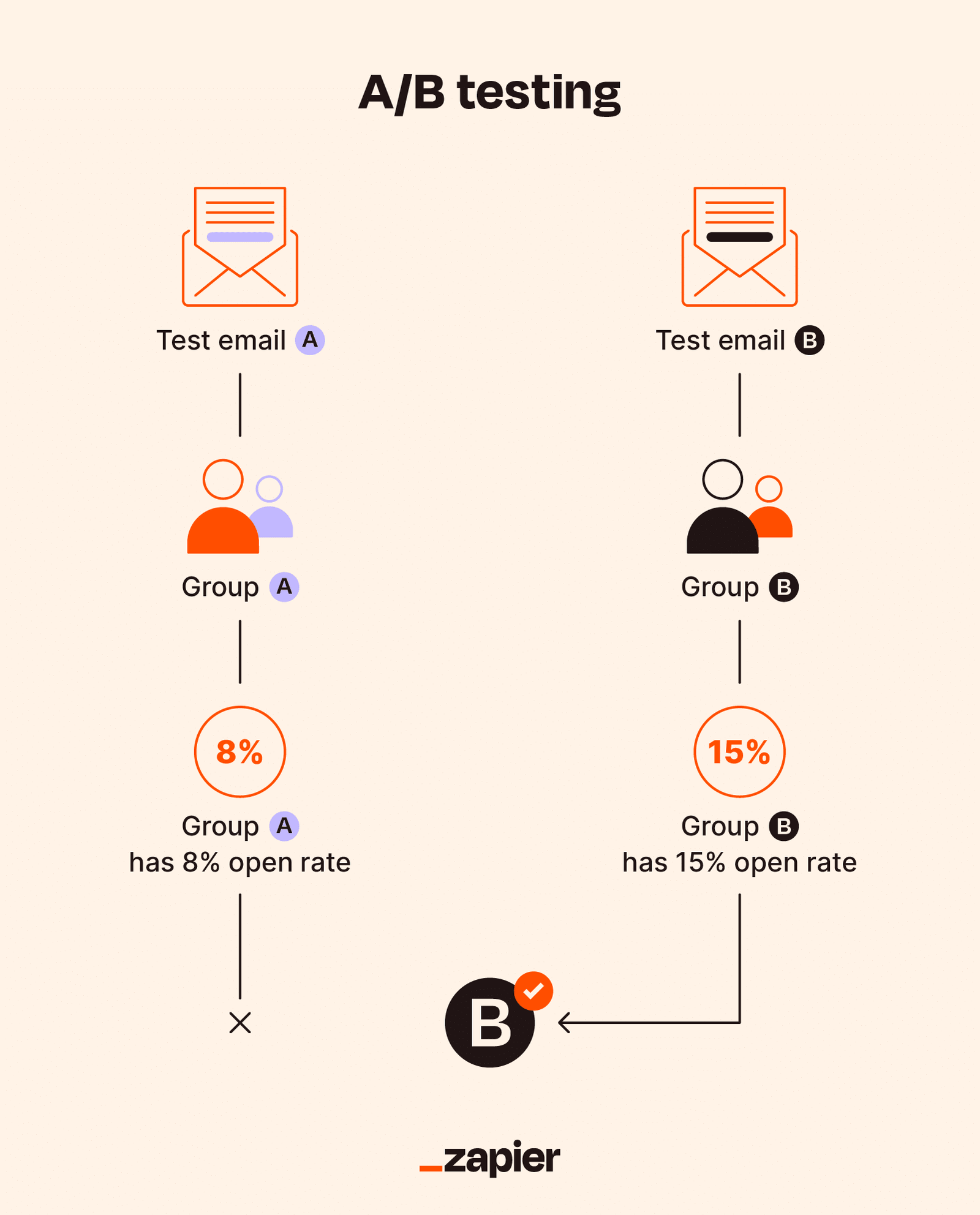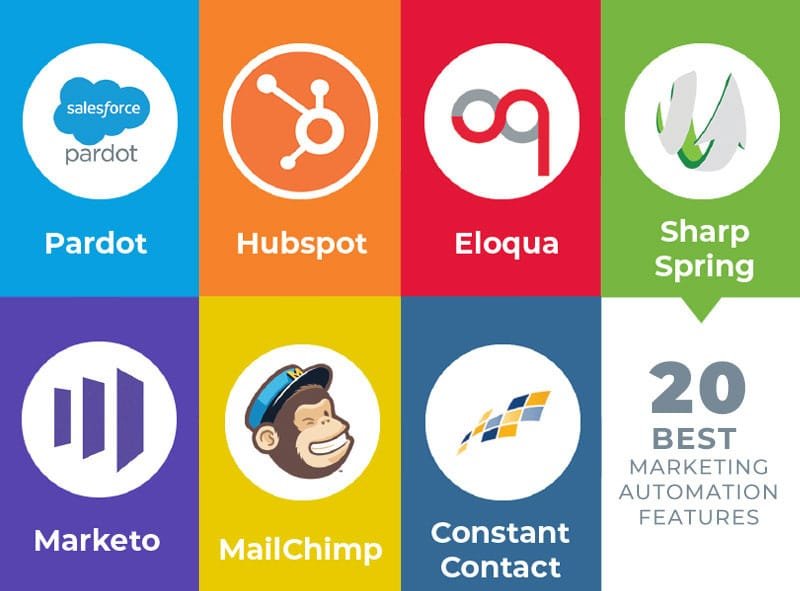A/B testing in email marketing is a method used to compare two versions of an email to determine which performs better. It involves sending variant A to one group and variant B to another, then analyzing the results.
In the world of email marketing, understanding what resonates with your audience is crucial. A/B testing helps marketers optimize their campaigns by providing insights into what works best. By testing different elements like subject lines, images, or call-to-action buttons, you can improve engagement rates and conversions.
This practice not only enhances your strategy but also ensures that your emails are more effective, leading to better results and a higher return on investment. Let’s dive deeper into why A/B testing is essential and how it can benefit your email marketing efforts.
Introduction To Ab Testing
AB Testing, or split testing, is a method used to compare two versions of an email to see which performs better. This technique helps marketers understand what content resonates most with their audience. By testing different elements, marketers can optimize their email campaigns for better results.
Basics Of Ab Testing
AB Testing involves sending two different versions of an email to a small portion of your audience. These versions usually vary by one element, such as subject lines or images. The performance of each version is then measured using specific metrics like open rates or click-through rates. The version with better performance is sent to the remaining audience. This method helps in making data-driven decisions.
Importance In Email Marketing
In email marketing, AB Testing is crucial for improving engagement. It allows marketers to identify what content their audience prefers. For instance, one subject line might generate more opens than another. This insight helps in crafting emails that attract more attention. Consistent AB Testing can lead to improved email performance over time. It also helps in understanding audience behavior better. By learning what works and what doesn’t, marketers can refine their strategies. This ultimately leads to more effective email campaigns.
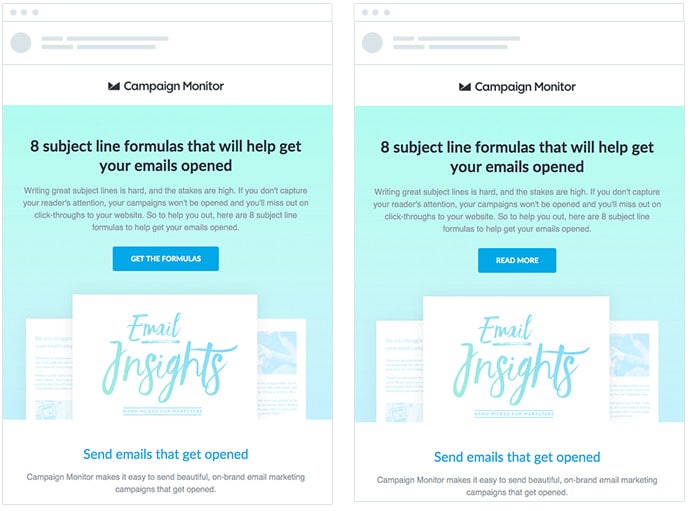
Credit: www.campaignmonitor.com
Setting Clear Objectives
When diving into AB testing in email marketing, setting clear objectives is crucial. Without a defined purpose, your tests can easily become aimless and unproductive. Let’s break down how to set clear objectives, starting with identifying goals and defining success metrics.
Identifying Goals
First, pinpoint the specific goals you want to achieve with your email marketing campaign. Are you aiming to increase open rates? Or perhaps you want to boost click-through rates?
Consider what success looks like for you. If you want more engagement, focus on content that resonates with your audience. If you are driving sales, highlight your products effectively.
For example, I once set a goal to increase newsletter sign-ups by 20%. By focusing on compelling subject lines and offering attractive incentives, I saw a noticeable improvement.
Defining Success Metrics
After identifying your goals, define the metrics that will measure your success. These metrics could be open rates, click-through rates, conversion rates, or even unsubscribe rates.
Ensure these metrics align with your overall business objectives. If your goal is to increase sales, track conversions closely. If brand awareness is your aim, focus on engagement metrics.
Ask yourself: What specific data will show me that my email campaign is working? Clear metrics will help you analyze results and make informed decisions.
Remember, setting clear objectives allows you to track progress and understand what works best for your audience. What objectives will you set for your next AB test?
Choosing Variables To Test
Choosing the right variables to test in your AB testing is crucial. This helps you find what works best for your audience. By focusing on specific elements, you can make data-driven decisions. Here are two key variables to consider testing in your email marketing.
Subject Lines
Subject lines are the first thing your audience sees. Testing different subject lines can help you understand what grabs attention. Try varying the length of your subject lines. Test using questions versus statements. Experiment with including emojis or not. See if personalization with the recipient’s name makes a difference. Each of these variations can impact your email open rates.
Email Content
Email content is what keeps your readers engaged. Test different types of content to see what resonates. You might try varying the length of your emails. Compare the effectiveness of text-heavy versus image-heavy emails. Experiment with different call-to-action (CTA) placements. Test the tone of your writing, whether formal or casual. Each change can affect how your audience responds.
Segmenting Your Audience
AB testing in email marketing is crucial for understanding what resonates with your audience. A key component of AB testing is segmenting your audience. This means dividing your email list into smaller groups based on specific criteria. You can better target these groups, leading to more personalized and effective campaigns.
Targeting Strategies
When you segment your audience, you can apply different targeting strategies. You might segment based on demographics like age, gender, or location. Another option is behavioral segmentation, focusing on past purchasing behavior or engagement with previous emails. Think about what criteria make sense for your business and audience.
For example, if you sell sportswear, you might segment your audience based on the type of sport they are interested in. This allows you to send more relevant content and offers, increasing the likelihood of engagement.
Creating Control Groups
Creating control groups is another critical aspect of AB testing. Control groups help you measure the effectiveness of your changes. By comparing results from your test groups with a control group, you can see if your new strategy performs better than the old one.
Imagine you have a new email design you think will boost engagement. You would send the new design to your test group and keep the old design for your control group. If the test group shows significantly higher engagement, you know your new design is a success.
Have you ever tried segmenting your audience for AB testing? What targeting strategies worked best for you? Share your experiences and thoughts in the comments below!
Running The Test
Running the test helps determine what works best for your audience. AB testing in email marketing compares two versions to see which performs better. This method can optimize open rates and engagement.
Running the Test Once you’ve set up your A/B test for your email marketing campaign, it’s time to run the test. This stage is all about executing the test and gathering data to see which version of your email performs better. It’s essential to manage this phase carefully to get accurate and actionable insights.Test Duration
Choosing the right test duration is crucial. If the test runs too short, you might not collect enough data to make a reliable decision. On the other hand, running it too long could delay your marketing efforts. Typically, a good duration is between a few days to a week. This timeframe allows you to gather enough data without stalling your campaign. For instance, if you send your emails on a Monday, you might want to review the results by Friday.Data Collection Methods
Collecting data effectively is the backbone of A/B testing. You need to track key metrics like open rates, click-through rates, and conversion rates. Use your email marketing platform to gather this data. Most platforms offer built-in analytics that make this easy. For example, you can compare which subject line had a higher open rate or which call-to-action button resulted in more clicks. Additionally, consider segmenting your audience for more detailed insights. This can help you understand how different groups respond to your emails. By focusing on test duration and data collection methods, you can run your A/B test effectively. What surprises have you encountered when running your tests? Share your thoughts in the comments!Analyzing Results
Analyzing results in A/B testing for email marketing is crucial. It helps you understand what works best for your audience. By examining the data, you can make informed decisions for future campaigns. This section will cover interpreting data and understanding statistical significance.
Interpreting Data
Interpreting data from A/B tests involves looking at key metrics. Open rates show how many recipients opened your email. Click-through rates reveal how many clicked on links within the email. Conversion rates track the number of people who completed a desired action. Comparing these metrics between the two versions helps identify the better-performing email.
Visualize the data in charts or graphs. This makes it easier to spot trends. Look for patterns that suggest why one email performed better. Consider factors like subject lines, images, and call-to-action buttons. Understanding these elements helps create more effective emails in the future.
Statistical Significance
Statistical significance is vital in A/B testing. It ensures the results are not due to chance. To achieve statistical significance, you need a large enough sample size. This means having enough recipients to make the results reliable. Use online calculators to determine the required sample size.
Set a confidence level, usually 95%. This means you can be 95% sure the results are accurate. If the results are statistically significant, you can trust the findings. This helps you make confident decisions about your email marketing strategies.
Remember, not all tests will show significant results. That’s okay. Learn from each test and keep improving your emails. The goal is continuous improvement and better engagement with your audience.
Implementing Findings
Implementing findings from AB testing in email marketing can significantly boost your campaign’s effectiveness. It’s about taking what you’ve learned and making strategic adjustments. This process involves optimizing your campaigns and committing to continuous improvement.
Optimizing Campaigns
Once you gather data from AB testing, use it to fine-tune your email campaigns. Look at what worked and what didn’t. For example, if a particular subject line had a higher open rate, try using similar tones or phrases in future emails.
Your goal is to apply these insights consistently. Consider adjusting your email content, design, and sending times based on what the data suggests. This approach ensures that each email you send is better tailored to your audience’s preferences.
Remember, optimization is not a one-time task. It’s an ongoing process. You need to keep testing and adjusting to stay ahead of changing trends and behaviors.
Continuous Improvement
AB testing is not just about making immediate changes. It’s about fostering a culture of continuous improvement. Each test provides new insights that can help you refine your strategies over time.
Think about the long-term benefits. Every test, whether successful or not, teaches you something valuable. Use these lessons to develop a more effective email marketing strategy.
Ask yourself, how can you apply these insights to future campaigns? What new ideas can you test? Keep pushing the boundaries of your creativity and strategy. This mindset will help you stay competitive and relevant.
By focusing on continuous improvement, you ensure that your email marketing efforts are always evolving. This not only leads to better results but also helps you understand your audience more deeply. And that’s the key to truly effective email marketing.
Common Pitfalls To Avoid
Avoid common pitfalls in AB testing for email marketing. Ensure sample size is adequate for accurate results. Test one variable at a time for clear insights.
When conducting A/B testing in email marketing, it’s crucial to be aware of common pitfalls. Neglecting these can lead to inaccurate results and misguided decisions. Let’s dive into some common mistakes that can derail your A/B testing efforts.Sample Size Errors
One of the most common mistakes is using an inadequate sample size. If your sample size is too small, your results won’t be reliable. Imagine you send two email variations to just 50 people each. The small sample size makes it hard to determine if the results are significant or just random. Make sure you have a large enough audience to get meaningful results. Use a sample size calculator to determine how many people you need to include in your test.Bias In Testing
Bias can sneak into your A/B testing in various ways. It skews your results and leads you to incorrect conclusions. For example, sending one version of an email during the week and another on the weekend introduces a timing bias. The results may reflect the time of sending rather than the email content. Ensure both versions are sent to similar audience segments at the same time to avoid this pitfall. Randomize your sample to reduce bias and get more accurate results. In the end, being aware of these pitfalls can make your A/B testing more effective. What challenges have you faced in your A/B testing efforts?Case Studies
When it comes to AB testing in email marketing, real-world examples can provide invaluable insights. Case studies showcase how different strategies have been implemented, their outcomes, and lessons we can learn. Let’s dive into some successful examples and uncover the lessons learned.
Successful Examples
One notable case is from a popular e-commerce company. They tested two subject lines—one with a discount offer and another with a new product announcement. The discount offer saw a 25% increase in open rates. This illustrates the power of tailoring your subject lines to your audience’s interests.
Another successful example is a tech startup that tested different email layouts. One layout had a single call-to-action (CTA) button, while the other had multiple CTAs. The single CTA layout resulted in a 40% higher click-through rate. This shows the importance of clear and focused messaging.
Lessons Learned
From these examples, several key lessons emerge. First, your subject line is crucial—it can significantly impact open rates. Test different approaches to see what resonates most with your audience.
Second, email layout matters. Simplifying your design and focusing on one clear CTA can improve engagement. Avoid clutter and make it easy for your readers to take action.
Lastly, always be willing to test and learn. What works for one campaign may not work for another. Keep experimenting to find the best strategies for your unique audience.
Have you tried AB testing in your email marketing? What results did you see? Share your experiences and let’s learn together!
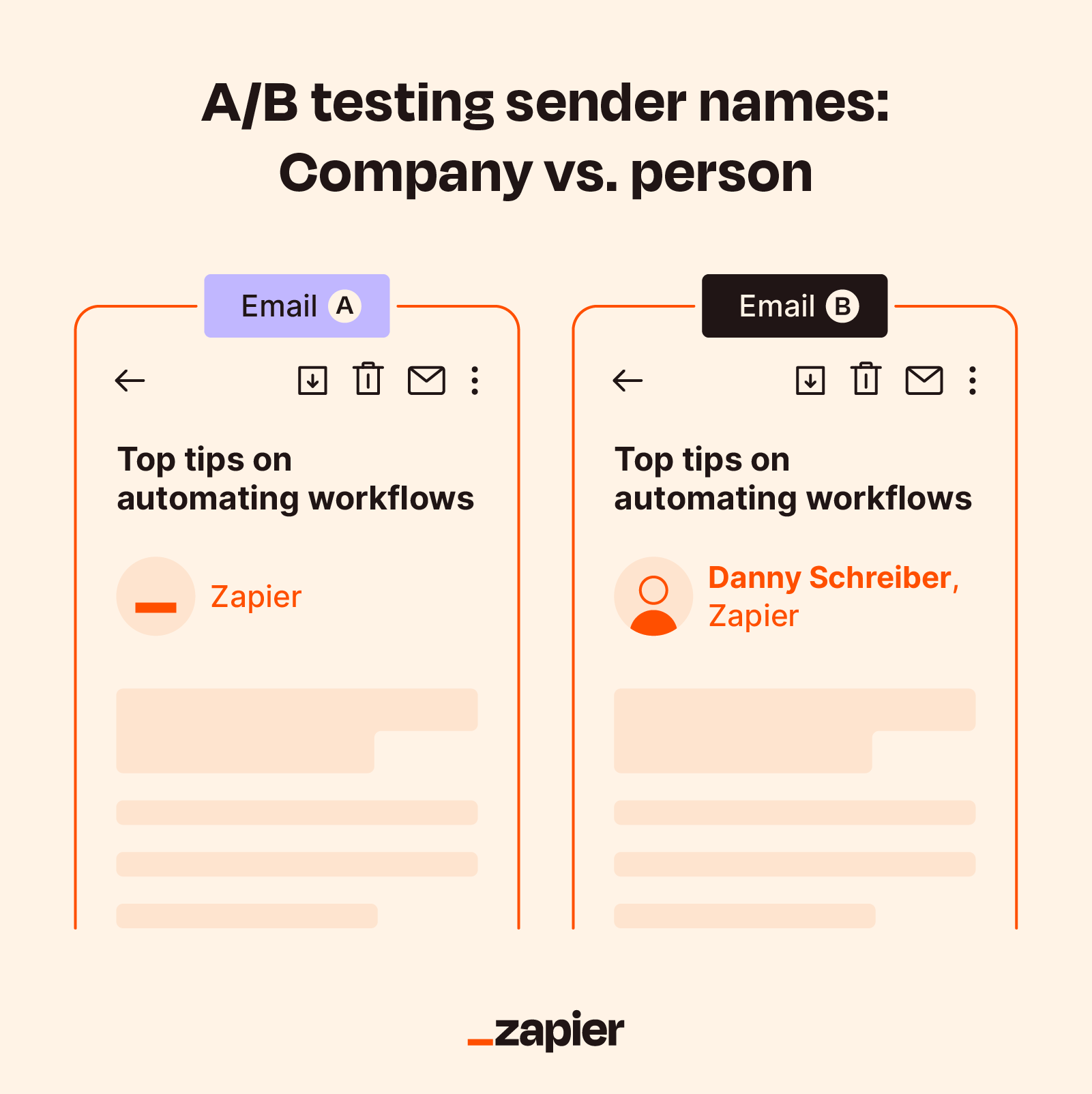
Credit: zapier.com
Future Of Ab Testing In Email Marketing
AB testing helps find the best email content for your audience. It compares two versions to see which works better. This improves engagement and results.
As email marketing continues to evolve, AB testing remains a crucial component. It allows marketers to understand what resonates best with their audience. But what does the future hold for AB testing in email marketing?Emerging Trends
Emerging trends in AB testing are shifting towards more personalized approaches. Marketers are now segmenting their email lists into smaller, more targeted groups. This ensures more accurate testing and better results. Interactive content is becoming a popular trend. Including elements like polls or quizzes can provide immediate feedback. This real-time interaction can significantly enhance your AB testing efforts. Another trend is the use of AI and machine learning. These technologies can predict which email variations will perform best. This can save time and provide more reliable data for your campaigns.Technological Advancements
Technological advancements are also playing a significant role in the future of AB testing. Advanced analytics tools are becoming more accessible. These tools offer deeper insights into user behavior and preferences. Automation is another key advancement. Automated AB testing can run multiple tests simultaneously. This means quicker results and the ability to optimize campaigns in real-time. Moreover, predictive analytics is on the rise. It helps in forecasting outcomes based on historical data. This can make your AB testing more proactive rather than reactive. With these advancements, you can refine your email marketing strategies. This ensures that your campaigns are always relevant and effective. The future of AB testing in email marketing looks promising, offering more precise and actionable insights. Would you consider integrating these trends and technologies into your current strategy? The benefits could be game-changing for your email marketing efforts.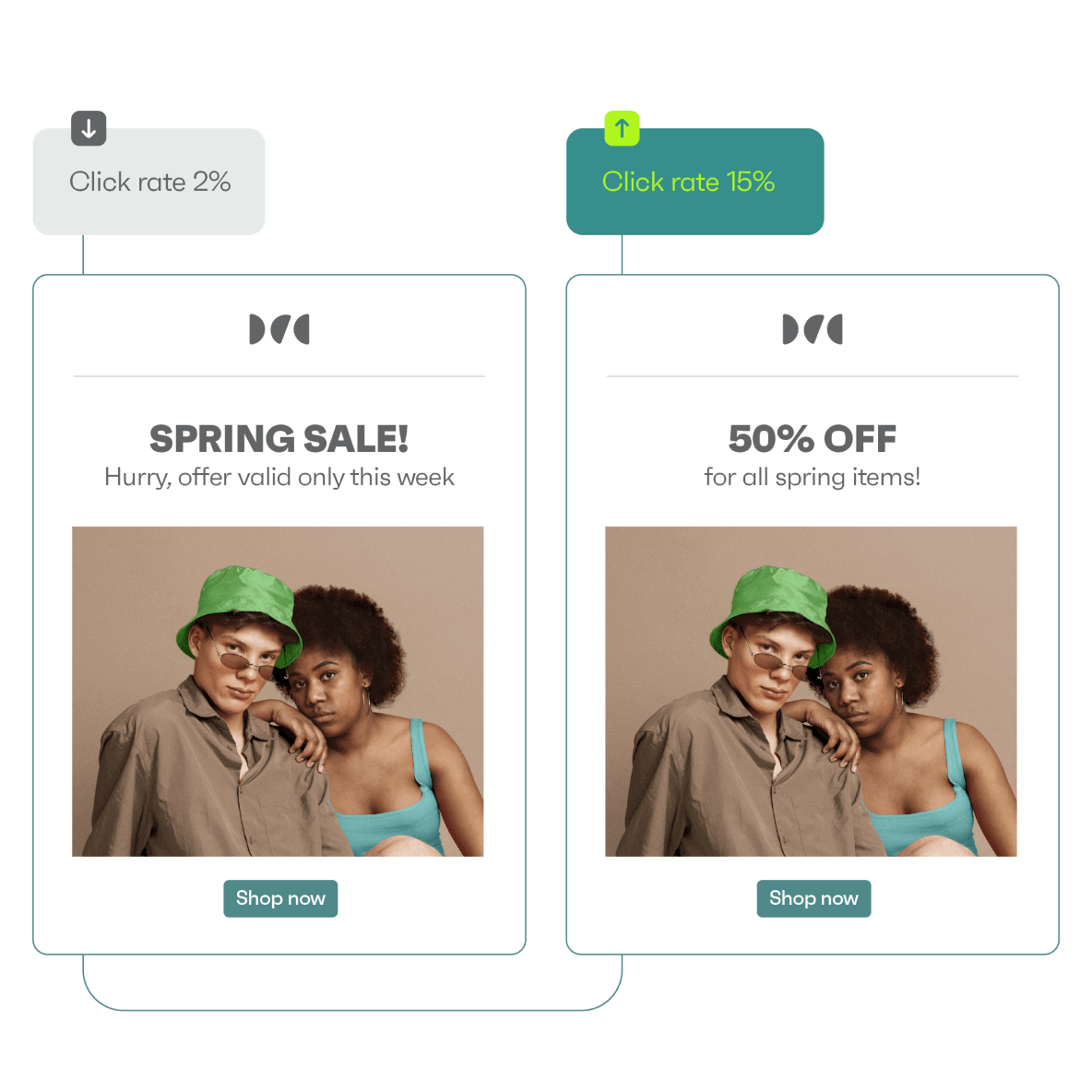
Credit: www.omnisend.com
Frequently Asked Questions
What Is The Purpose Of A B Testing In Marketing?
A/B testing in marketing compares two versions of a campaign to see which performs better. It helps optimize strategies for higher engagement and conversions.
How To Do Ab Testing For Email?
To do A/B testing for email, create two versions with one variable difference. Send each version to a small subscriber group. Measure open rates, click rates, and conversions. Analyze results to determine the better-performing email. Implement the winning version for the larger audience.
What Is The First Step In Performing An A/b Test In Email Marketing?
The first step in performing an A/B test in email marketing is to define your goal. Determine what you want to achieve, such as increasing open rates or click-through rates.
When Performing Email Ab Test?
Perform email A/B testing by sending two versions to different segments. Analyze open rates, click rates, and conversions. Ensure the sample size is large enough for accurate results. Test one variable at a time, such as subject lines or call-to-actions.
Use the winning version for future campaigns.
Conclusion
AB testing in email marketing is essential. It helps improve engagement. You find what works best. Test subject lines, content, and images. Learn your audience’s preferences. Increase open rates and conversions. Save time and resources. Make data-driven decisions. Improve email marketing success.
Keep testing and refining. Your emails will perform better. Happy testing!

